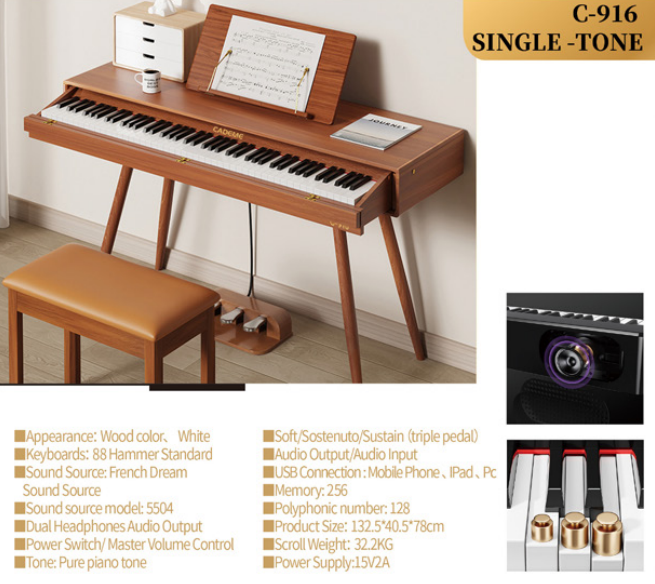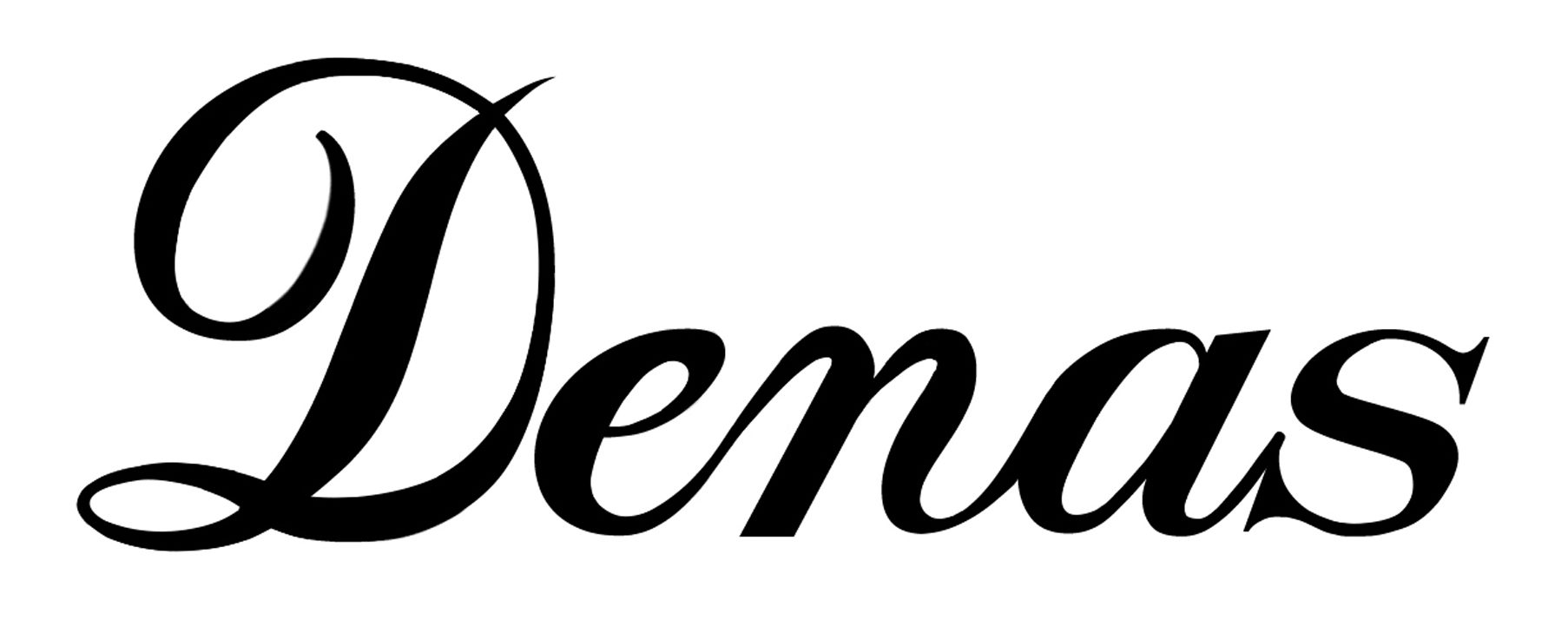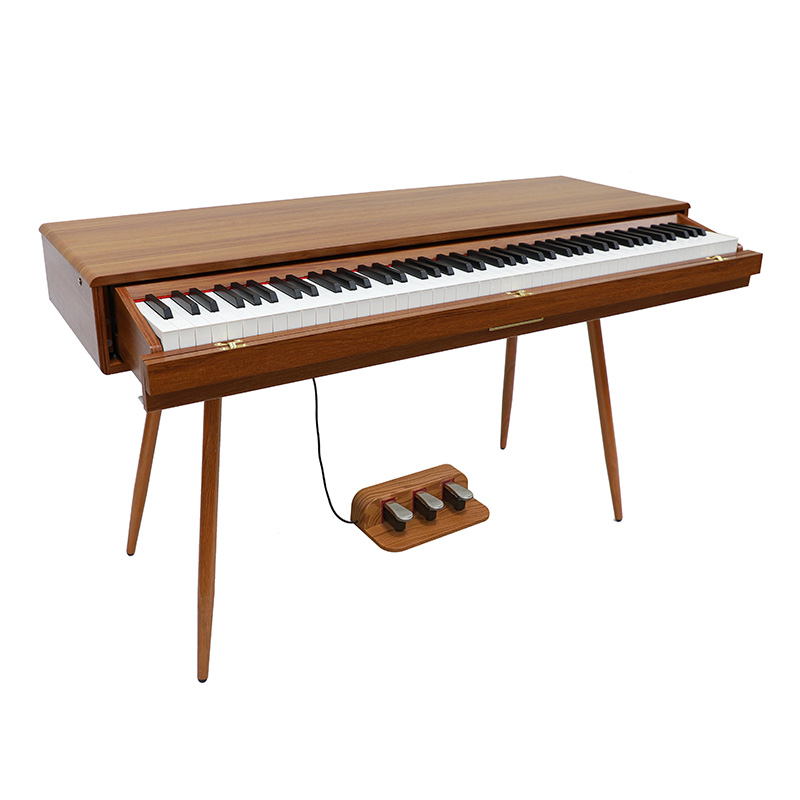In today’s interconnected world, digital pianos have evolved far beyond their traditional counterparts, offering musicians and learners unprecedented flexibility through advanced connectivity options. Features like MIDI, USB, and Bluetooth transform these instruments into versatile hubs for music production, education, and creative exploration. Let’s delve into how these connectivity features empower modern musicians and learners.
1. MIDI: The Universal Language of Music
MIDI (Musical Instrument Digital Interface) is the backbone of digital music creation. By connecting a digital piano to a computer or DAW (Digital Audio Workstation) via MIDI, users can:
- Control virtual instruments: Play and record software synths, orchestral libraries, or drum machines directly from the piano keys.
- Edit with precision: Adjust note timing, velocity, and expression post-recording for polished compositions.
- Integrate with hardware: Connect to synthesizers, sound modules, or lighting systems for live performances.
For learners, MIDI unlocks interactive apps like Synthesia or Simply Piano, which analyze playing technique in real time and provide instant feedback—a game-changer for mastering skills.
2. USB: Seamless Plug-and-Play Integration
USB connectivity simplifies the bridge between analog performance and digital workflows:
- Direct audio/MIDI transfer: Record high-quality audio or MIDI data into DAWs like Logic Pro or Ableton Live without external interfaces.
- Power and data in one cable: Many models draw power via USB, eliminating the need for bulky adapters.
- Firmware updates: Keep the piano’s software up-to-date for enhanced features and compatibility.
Educators benefit from USB’s reliability for classroom setups, enabling students to export recordings or connect to notation software like MuseScore for composition assignments.
3. Bluetooth: Wireless Freedom for Modern Musicians
Bluetooth technology liberates users from cables, offering two key modes:
- Bluetooth MIDI: Wirelessly connect to tablets or smartphones for app-based learning, such as Yousician or Piano Marvel.
- Bluetooth Audio: Stream backing tracks or tutorials directly through the piano’s speakers while playing along.
This wireless versatility is ideal for:
- Mobile creators: Compose on-the-go using a tablet and headphones.
- Collaborative environments: Jam with other Bluetooth-enabled instruments or share mixes effortlessly.
4. Expanding Possibilities: Apps and Ecosystems
Modern digital pianos often partner with dedicated apps to enhance functionality:
- Tone customization: Adjust piano sounds or layer effects via manufacturer apps (e.g., Roland Piano Partner).
- Sheet music management: Sync digital scores wirelessly and annotate pages in real time.
- Remote control: Adjust settings like metronome tempo or split/layer modes from a smartphone.
For learners, apps like Flowkey or Piano Maestro turn practice into an engaging, gamified experience, tracking progress and offering structured lessons.
5. Why Connectivity Matters for Music Makers and Learners
- Democratizing music production: Home studios can now rival professional setups with minimal gear.
- Personalized learning: Adaptive apps cater to individual skill levels and goals.
- Future-proofing: Regular software updates and compatibility with emerging tech ensure long-term relevance.
A Connected Future for Piano Enthusiasts
The integration of MIDI, USB, and Bluetooth in digital pianos isn’t just a technical upgrade—it’s a revolution in accessibility and creativity. Whether you’re producing a track, mastering a concerto, or teaching a student, these features dissolve barriers between inspiration and execution. As technology continues to evolve, the digital piano stands as both an instrument and a gateway to infinite musical possibilities.





